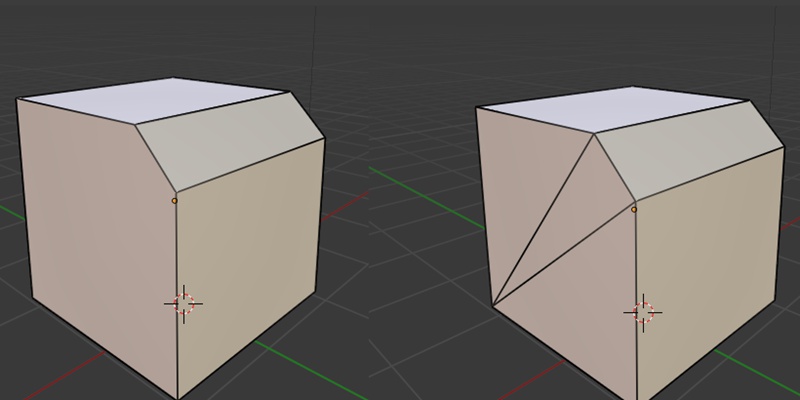
Chamfering is an important manufacturing process. It is carried on the corresponding edge of mechanical components to facilitate assembly and improve performance. This article explains the beveling process in detail, covering what a bevel is, what types of bevel cuts there are, and the practicalities involved.
What is a chamfer (chamfer)?
Let's start with the main question: what is chamfering? Simply put, chamfering is a manufacturing process in which the mating edge of a part is prepared in a specific configuration (angle, shape). This chamfer facilitates assembly with a mating counterpart, which is one of the most common aspects of a design for manufacturing analysis.
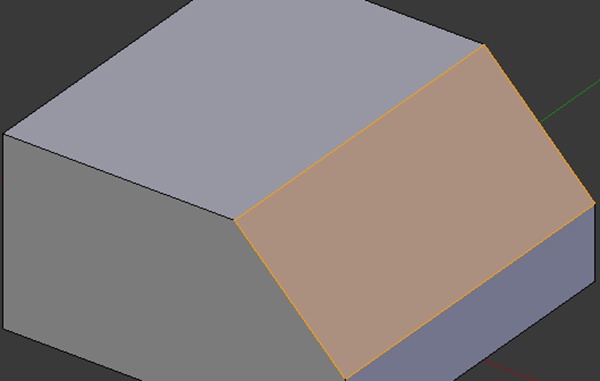
Advantages of chamfers in construction
Now that we have established the definition and purpose of the chamfer, let's talk about its benefits in mechanical assembly. There are several reasons why the bevel is an important design feature.
Easy construction
Chamfering is a useful method for ensuring that mating parts fit together tightly in the correct configuration. For example, machinists create complex joints by chamfering their parts. Without the correct chamfer shape, it is impossible to assemble these connections.
Improve welding quality
Weld edge preparation is a special application of the chamfering process. With the proper bevel geometry, engineers can ensure deeper weld penetration while allowing welders enough space to introduce filler material into the weld zone. Additionally, the geometry of a beveled edge can also accelerate heat transfer and dissipation, contributing to weld consistency and strength.
Security
One of the main benefits of the beveling process is its contribution to improving user safety. Sharp edges on products can cause injuries. Therefore, when such a danger exists, designers prefer to add a beveled edge to ensure that their designs are safe to use. Examples of this are chamfers on metal casings, car rims, etc.
Stress distribution
Due to their stress-prone geometry, sharp edges are very susceptible to defects such as wear, cracking and chipping. Since they don't provide much surface area for stress to propagate, even a small force can damage it.
Therefore, the main reason for chamfering edges is to obtain an edge geometry that has a lower stress concentration due to its larger surface area.
aesthetics
A beveled edge can often increase the visual appeal of a product. For example, a car part with beveled edges looks much more noticeable than its counterpart with sharp corners.
Imagine a smartphone case with very sharp edges instead of rounded edges. Not only would it be unsafe and difficult to use, but it wouldn't look particularly good either.
Types of chamfers
A bevel cut can take on many shapes and sizes, each with its own specific uses and considerations. In this section we will discuss the different types of chamfers.
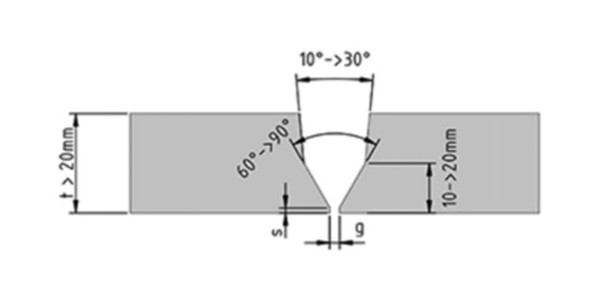
Single Bevel/V-Chamfer
A simple bevel or V-bevel is the most common type of bevel cut. It is a simple sloping edge with a constant angle and often constant width. Although the geometric shape is very simple, it plays an important role in many technical applications.
For example, the oblique angle of a smooth bevel provides enough space for good weld penetration. Furthermore, it is also often used for aesthetic and safety reasons.
Furthermore, the straight surface of a smooth chamfer is quite easy to produce and can therefore be machined very precisely. This is an important feature because a smooth bevel surface can reduce stress build-up, chipping and cracking.
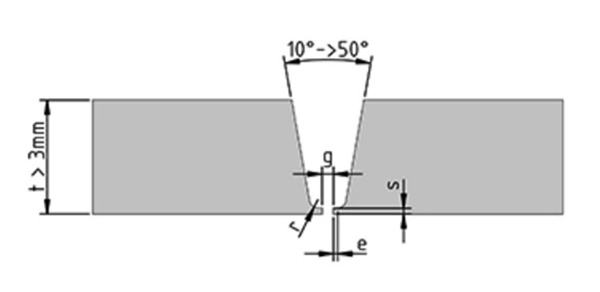
J Bezel
J chamfers have an edge that resembles the letter “J”, hence the name J chamfer. Its edge has a composite profile with straight and rounded sections.
It is a high-performance chamfer because it provides greater surface area for welds with deeper penetrations. The J-bevel is preferred for butt welds because its straight face provides a good mounting reference and the rounded part allows easy access to the edge of the weld with enough room for the weld pool to form.
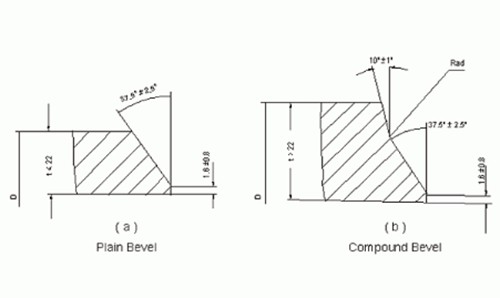
Composite bezel
A compound beveled edge has a more complex shape with at least two unique profiles. It typically consists of two straight bevels on the same edge, each with a different angle and width. However, any number of combinations are possible. Additionally, the compound bevel is one of the most versatile types of beveled edges and is used in woodworking, metal fabrication, and pipe assembly.
Although the functionality of the compound bevel is limited for weld edge preparation due to its superior properties, it is sometimes useful for advanced welding applications. For example, in certain cases, an uneven weld thickness along the edge may be required to provide additional support to one end. In this case, a composite bezel may come in handy.
Knife bevel
A razor-edge bevel is a special type of bevel geometry with a very sharp and pointed edge preparation. It is useful for products that require sharp edges. For example, knives, surgical instruments, woodworking equipment such as chisels and cutting tools.
Rounded bezel
A rounded bezel is characterized by its rounded profile and rounded at the pointed edge. Its applications include adding safety features to products such as automotive parts, metal structures, etc.
Furthermore, the rounded edge also reduces stress concentration on the chamfered edges. For example, the edges of cutting tools are slightly rounded to avoid unwanted chips.
Chamfering tools and equipment
The chamfering process is not very different from most machining processes, but it is quite specialized in terms of equipment and tools.
Hand tools
In many shops, machinists use hand tools, such as hand files and hand sanders, to chamfer. They need your skills and knowledge to create beveled edges on small to medium-sized projects.
However, the application of these tools is limited to simpler chamfer geometries, as the production of complex chamfer profiles with large-scale hand tools is not possible.
Eletric tools
Power tools like angle grinders and routers are a step up from hand tools. This option provides reasonable accuracy, speed and versatility in chamfer geometry. Therefore, power chamfering tools are widely used in most machine shops.
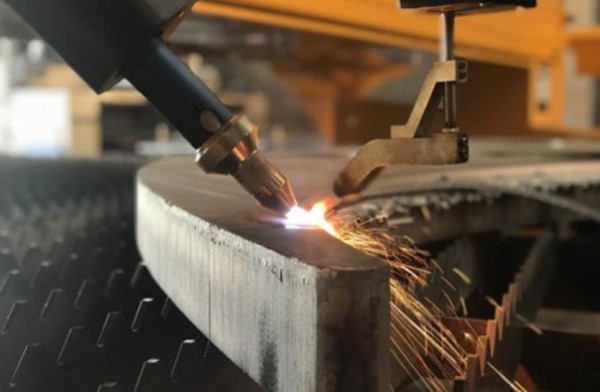
Flame cutting
Another popular chamfering method is flame cutting. The material is heated to its melting temperature using a flame. At this point it separates from the main edge of the piece, leaving a chamfer.
Flame cutting is particularly useful in applications such as chamfering pipes and thin parts. However, the flame cannot completely penetrate thicker parts. Post-processing operations are typically required to remove excess melted material.
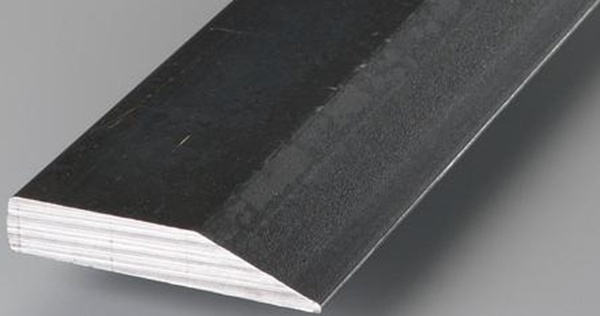
CNC machines
CNC machining centers are the first choice of manufacturers when they want to perform a chamfering operation that requires high precision, complex geometry and productivity.
Thanks to multi-axis machining functions, you can easily edit complex chamfer profiles. Additionally, because CNC technology is very precise and can use very small cutting tools, it is perfect for creating small, precisely beveled edges.
Another advantage of using CNC machines for chamfering is that almost no post-processing is required. There are only minimal burrs, the surface finish is good and there is no noticeable thermal damage.
Specialized beveling machines
Shops that regularly carry out chamfering work often invest in a special chamfering tool. These machines are very similar to CNC machines in terms of accuracy and speed, but are designed specifically for chamfering work on a variety of geometries such as plates, tubes, and angle iron.
Additionally, they also support special chamfering operations with custom cutters.
How do you measure chamfers?
A beveled edge can have a very complex shape, which introduces the possibility of machining errors and inaccuracies. Therefore, a strict quality control procedure is required to ensure dimensional accuracy.
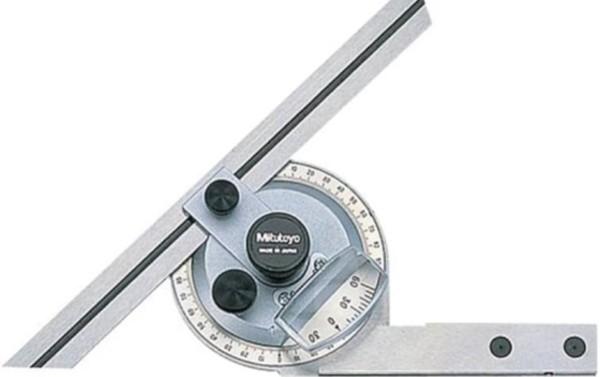
In this section, we provide a list of tools that experts use to measure chamfers.
- Universal protractor with vernier : These are specialized tools for measuring miter angles and lengths, two of the most important dimensions of a miter cut.
- Protractor with bubble level : It is a combined device for measuring the angle of a chamfer and ensuring that the measurement is made on a flat surface.
- Laser Angle Measurement : Laser measurements offer incredible accuracy in angle measurements and are common in high-precision projects.
- Coordinate Measuring Machines (CMMs) : Coordinate measuring machines are the most modern measuring devices when it comes to high-precision measurements. They help ensure tight dimensional tolerances on beveled edges with stringent quality requirements.
Expert tips for chamfering
Although the playing process is seemingly simple, it also presents some challenges. When preparing a beveled edge, operators should keep a few considerations in mind to ensure an efficient process with optimal results.
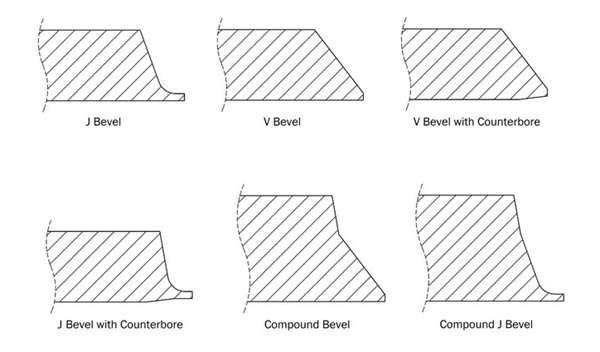
Here are some expert tips for optimizing chamfer quality:
Consistency is the key
The effectiveness of a chamfer depends on how uniform its geometry is. If the chamfer is cut at a certain angle, the entire surface of the chamfer (chamfer) must be at that angle. Therefore, operators must practice chamfering with geometric consistency in mind.
Avoid heating the workpiece
Although heating a part is tempting because it makes cutting easier, it is not suitable for chamfering. The reason for this is that a beveled edge is generally prepared for welding, where the uniformity of the material properties of both parts is of great importance. Heating the metal can change the properties of the material, leading to potential problems later.
Edge preparation
Edge preparation is an important step before chamfering and has a direct impact on quality. Make sure the edge is clean and free of rust or dirt to prevent uneven bevels and excessive tool wear.
Consider soda
When chamfering, the workpiece can become very hot due to friction. When chamfering difficult-to-machine materials such as steel or titanium alloys, the use of lubricants and coolants must be taken into consideration.
Compare chamfer, chamfer and rounding
Confusion often arises in design engineering because the terms chamfer, chamfer, and rounding are used interchangeably even though all three are edge treatments. In this section, we will address the confusion between chamfering, rounding, and chamfering.
A beveled edge, as discussed, is an edge finish between two surfaces. The surface can be at any angle, the chamfer can be at multiple angles, and the chamfer profile can have any number of straight, round, or curved surfaces.
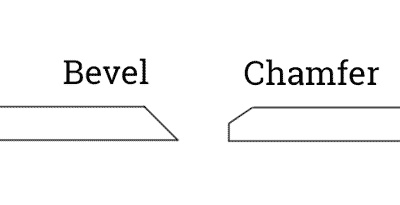
A chamfer, on the other hand, is very limited in its execution. It is usually located between two flat surfaces at 90° junctions and has a flat surface rather than a complicated profile. A chamfer is like a subset of the chamfering process.
Finally, a fillet is another edge feature, but it has a single, round profile that connects two surfaces. It is generally useful for reducing stress concentrations, safety risks and improving aesthetics.
Use of chamfers in technical applications
Chamfers have countless applications across a wide variety of industries. They are a very common design feature that can be present in almost any product. Some of the main technical applications are as follows:
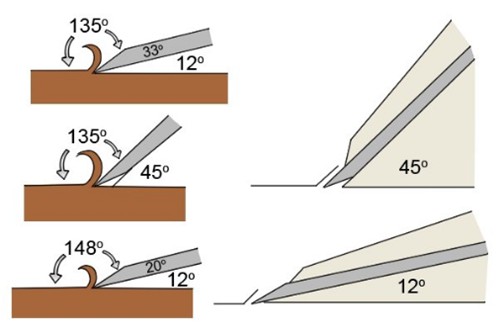
- Welding Preparation : Weld edge preparation is by far the most common application of the beveling process. High-quality chamfer improves weld penetration, weld strength and fracture resistance.
- Chamfering pipes and hoses : Pipes are universal products with a wide range of possible uses. Joining two tubes/hoses is not possible without professional edge processing.
- cutting tools : Cutting requires sharp edges with complex and correct edge geometry. Chamfering is a common method of giving the cutting edges of cutting tools the proper shape so that they can easily cut through hard materials.
- Industrial applications : Many components in the aerospace/automotive industry have beveled edges. For example, aircraft exterior profiles rarely have sharp corners to minimize drag and improve fuel efficiency.
- Architecture/Home Decor : The aesthetics of a beveled edge cannot be overlooked. Everything in the house, from table tops to tiles, from furniture to appliances, has beveled cuts for visual and user safety reasons.
Concluding
The chamfering process is a common process in the manufacturing industry and is widely used. Chamfers contribute to the performance, safety and aesthetics of the part and are available in a variety of design configurations.

Common questions
What are the most common chamfer defects?
Chamfers are susceptible to various types of defects. Some of the most common are inconsistent bevel angles, rough edges, edge burning, chipping, and edge cracks. All of this can be avoided by applying professional manufacturing techniques and process parameters.
What are the most important parameters when chamfering?
The most important chamfer parameters are chamfer angle, chamfer width, chamfer and speed.
What is the purpose of beveled edge preparation?
Bevel edge preparation is an important part of the chamfering process. Ensures smooth, clean edges, helps achieve machining precision and increases tool life.

























































